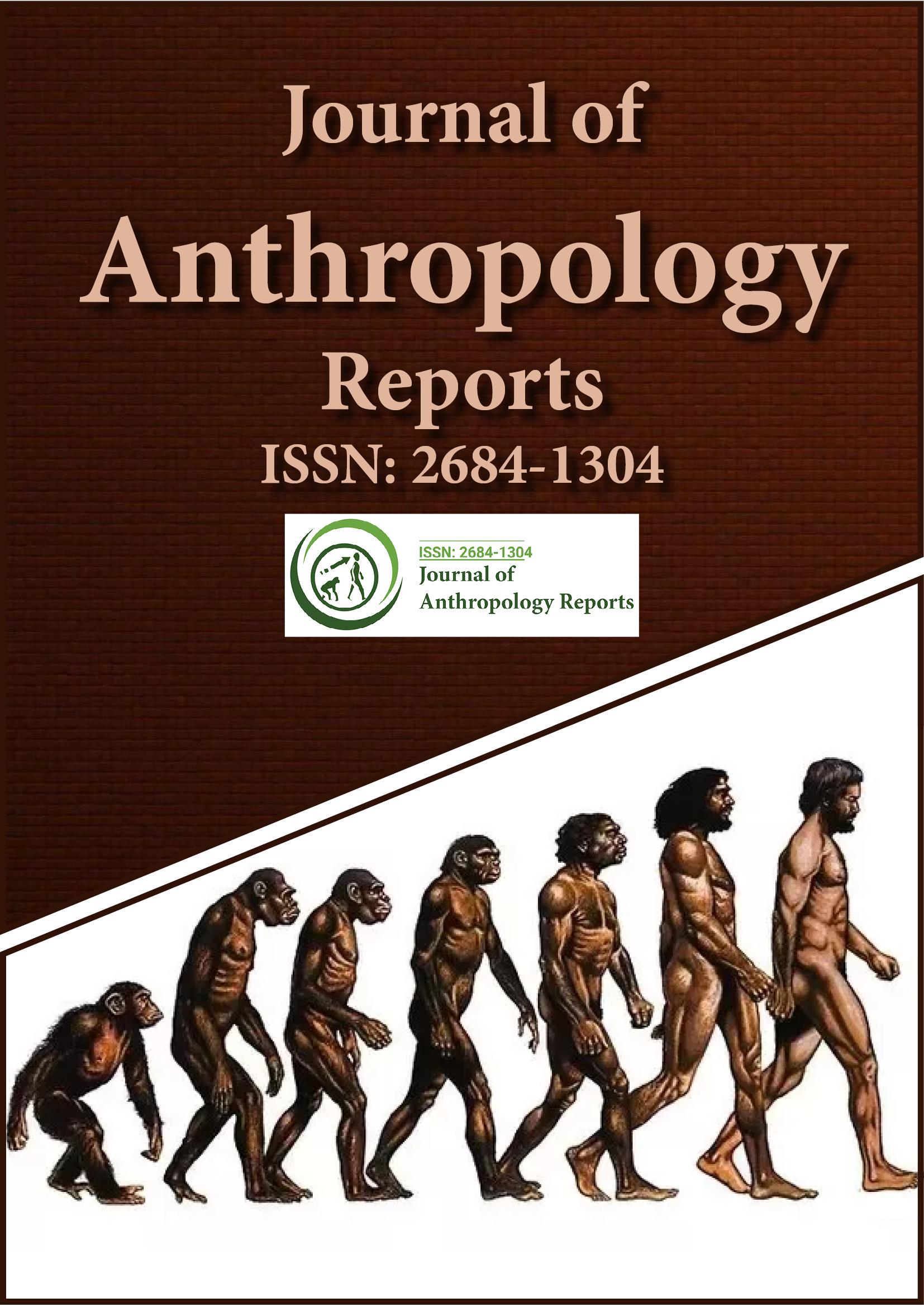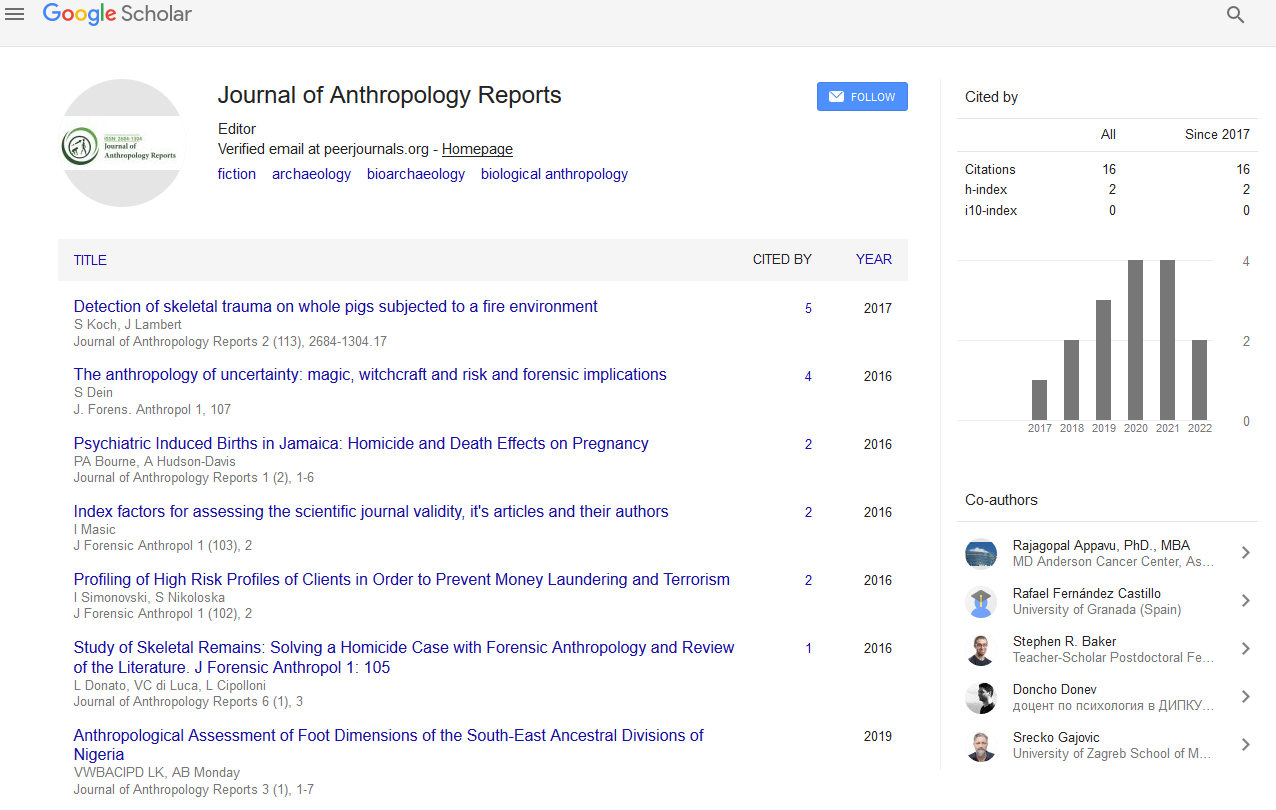Indexed In
- RefSeek
- Hamdard University
- EBSCO A-Z
Useful Links
Share This Page
Journal Flyer

Open Access Journals
- Agri and Aquaculture
- Biochemistry
- Bioinformatics & Systems Biology
- Business & Management
- Chemistry
- Clinical Sciences
- Engineering
- Food & Nutrition
- General Science
- Genetics & Molecular Biology
- Immunology & Microbiology
- Medical Sciences
- Neuroscience & Psychology
- Nursing & Health Care
- Pharmaceutical Sciences
Commentary - (2022) Volume 5, Issue 2
Improving Outcomes in Forensic Facial Reconstruction
Received: 04-Mar-2022, Manuscript No. JFA-22-16101; Editor assigned: 07-Mar-2022, Pre QC No. JFA-22-16101(PQ); Reviewed: 21-Mar-2022, QC No. JFA-22-16101; Revised: 28-Mar-2022, Manuscript No. JFA-22-16101(R); Published: 05-Apr-2022, DOI: 10.35248/2684-1304.22.5.121
Description
Forensic Facial reconstruction is a method used in forensic medicine when a crime involves an unidentified corpse. In either case, the sculptor will work with a forensic anthropologist to interpret the skeletal features and ultimately help identify the victim`s age, gender, and ancestors. Face reconstruction is the method used in forensic medicine a crime involves an unidentified corpse. Facial reconstruction is usually performed by a sculptor who is an expert in facial anatomy. This sculptor may be a forensic scientist, but it is not required. Either way, the sculptor will work with forensic anthropologists to interpret the features of the skeleton that will ultimately help reveal the age, sex and ancestry of the victim. The sculptor can also reveal anatomical features that are related to the body structure such as facial asymmetry, evidence of injuries like a broken nose or teeth that were lost before death.
These factors are determined by using either the three dimensional reconstruction techniques or a two dimensional reconstruction technique. The three dimensional reconstruction technique requires the sculptor to place tissue markers on the skull at specific points so that when the clay is placed the reconstruction looks as close to the victim as it can be so that there is a better chance of the victim being identified. The points where the markers are placed is determined by generalized measurements of depth based on age, gender and ethnicity. Fake eyes are also added to the rebuild. Various measurements are also made to determine eye position, width, nose length, and mouth length. The eyes are centered and placed at a specific depth. The skull should be placed on a tripod in the horizontal Frankfurt position, which is the agreed normal position of the human skull.
Once the tissue marker is glued to the skull, the sculptor can place the clay on the skull and begin engraving it to create a face.
Once the basic shape is built, the sculptor can begin to make the skull look like a sacrifice. The sculptor uses all the information from forensic anthropologists. This information may include the victim's geographic location or the victim's lifestyle. To identify unknown victims, sculptors add hair in the form of wigs or clay that represents hair. The sculptor can also add a variety of props, such as glasses, clothing, or anything that may be identifiable.
The first of 2D reconstruction techniques, such as 3D reconstruction techniques, tissue to a specific location and depth of the skull using generalized measurements determined by age, gender, and ancestors. When the skull is in the correct horizontal position in Frankfurt on the stand, the skull is photographed. The skull is taken in a 1: 1 ratio from both the front and profile views. When taking a picture, place a ruler along the skull. After shooting, the photo is magnified to life size and glued to two adjacent wooden boards in a horizontal position in Frankfurt. Once the photographs are attached transparent natural vellum sheets are taped directly over the printed photographs.
Once the setup is completed the artist can start to sketch. The artist sketches the skull by following the contours of the skull and using the tissue makers as guidelines. Measurements for the eyes, nose and mouth are performed the same way in this technique as they are performed in the three dimensional reconstruction techniques. Hair type and style is determined by either estimating based off of ancestry and sex, evidence found at the scene, or by information received from the forensic anthropologist or another professional. All processes are documented and the notes created are collected. The second 2D technique is to reconstruct the face from the disassembling body. In this way, the artist uses his knowledge of how the soft tissues of the skin are on the skull and how the body breaks down to recreates what the victim looked like before he died.
Citation: Yamamoto Y (2022) Improving Outcomes in Forensic Facial Reconstruction. J Anthropology Rep. 5:121.
Copyright: © 2022 Yamamoto Y. This is an open access article distributed under the terms of the Creative Commons Attribution License, which permits unrestricted use, distribution, and reproduction in any medium, provided the original author and source are credited.

